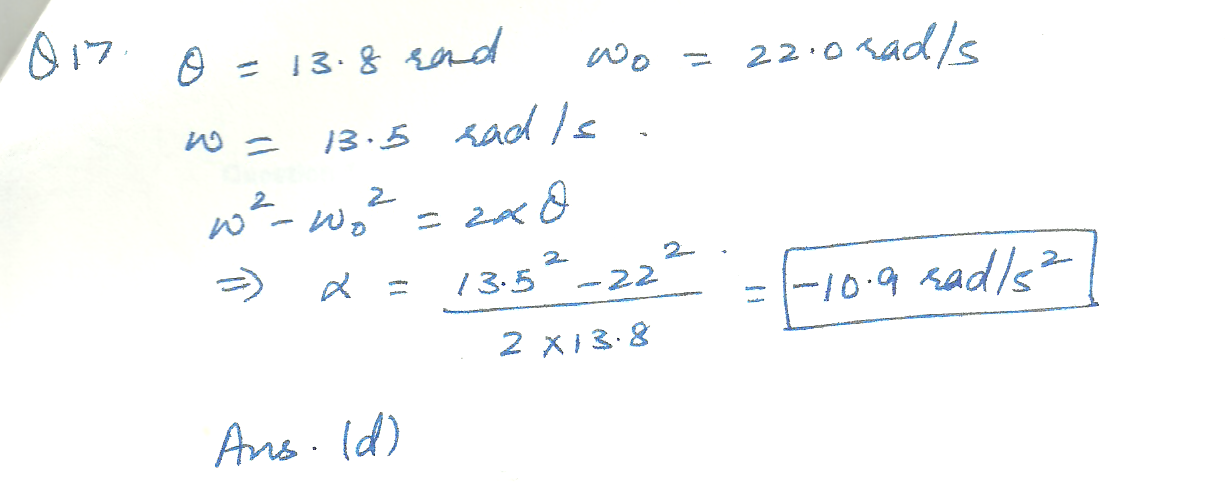Mathematics Integration Level: Misc Level
Integerate the following by parts by using ILATE.
I = inverse trigonometric
L = logarithmic
A = algebraic
T = trigonometric
E = exponential
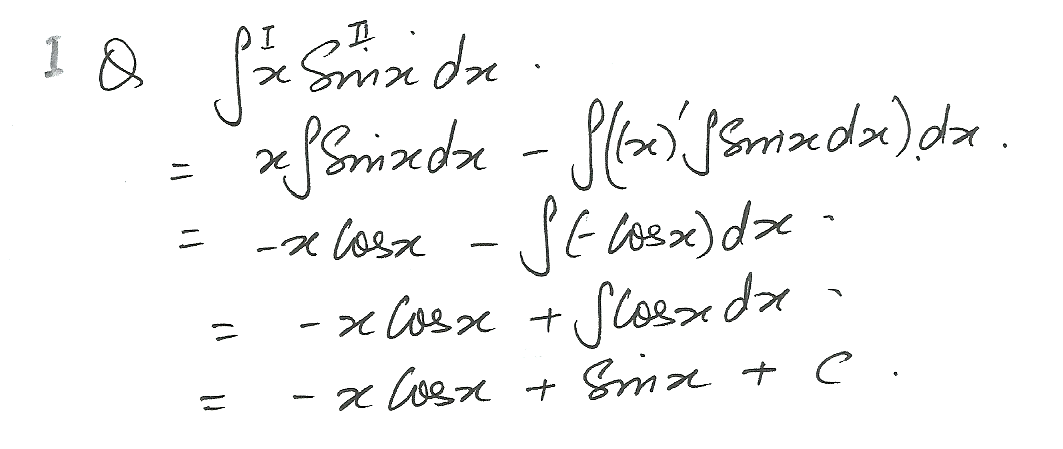
Physics Modern Physics Level: Misc Level
The activity of a certain large sample of radioactive nucleus x (decay constant =0.0002770/yr) is measured to be 11,080/yr. If the original sample size was 8x10 raised to the 9 th power nuclei, then approximately how many years elapse to yield the stated activity. ( carry 3 significant digits)?.
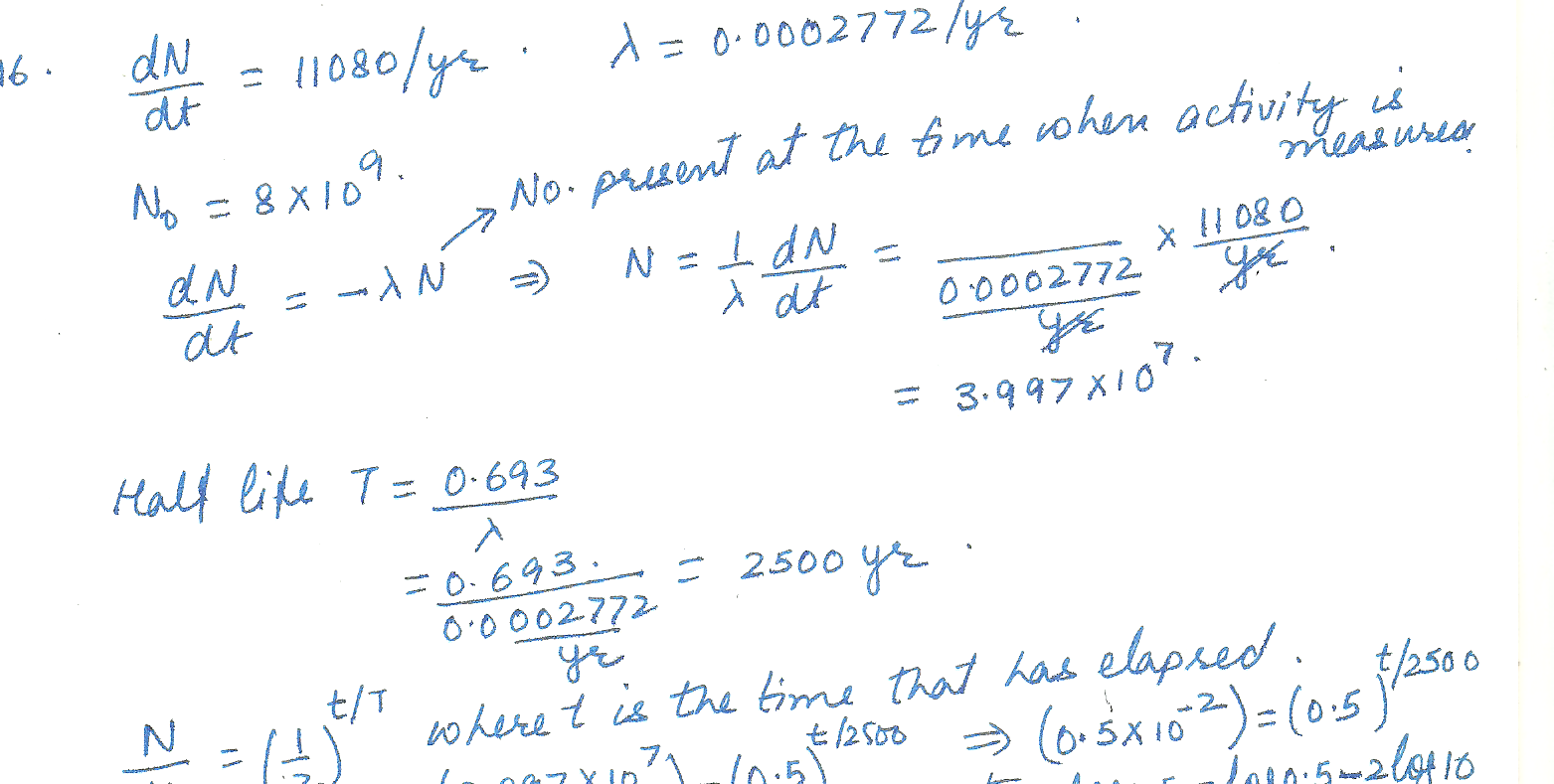
Physics Modern Physics Level: Misc Level
A radioactive nucleus (# 1) has approximate mass 125 and 52 protons. (#1) undergoes beta decay to daughter nucleus (#2) . (#2), still radioactive, then undergo gamma decay. The number of protons in the nucleus that remaims after (#2) undergoes this decay is what?
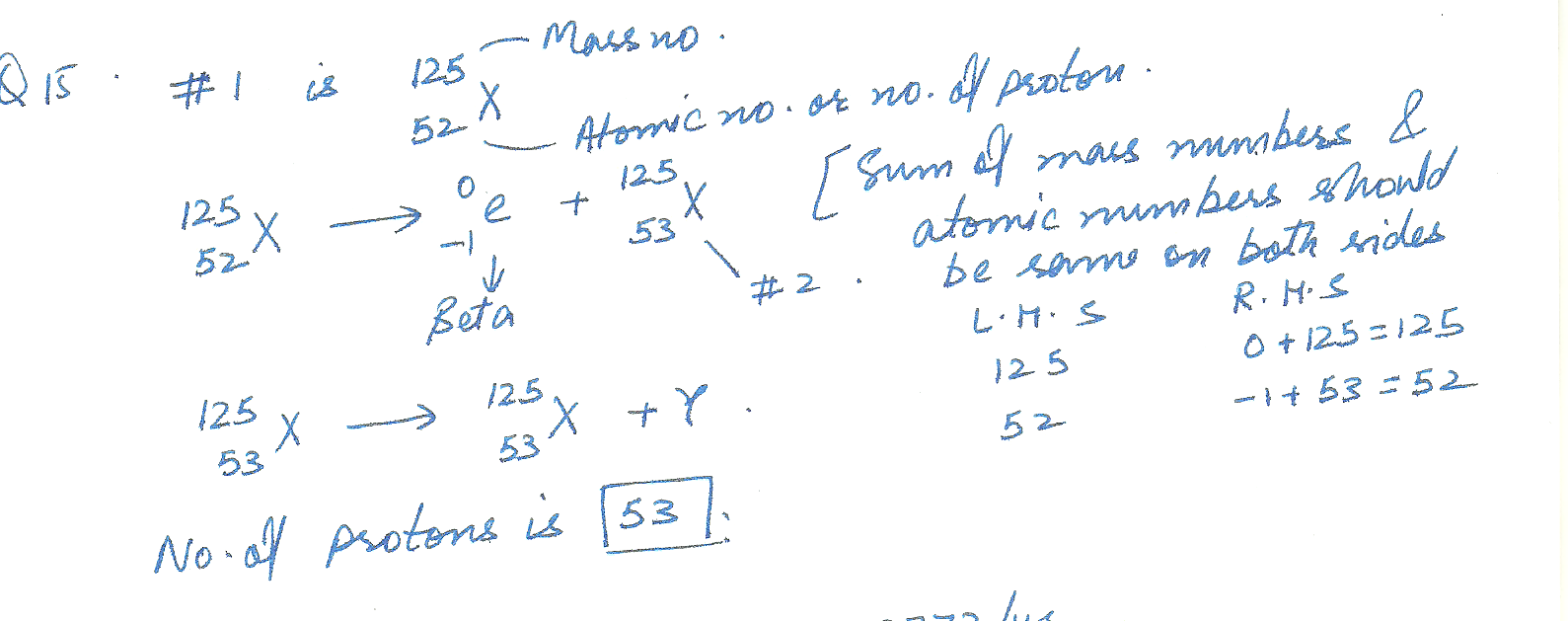
Physics Ray Optics Level: Misc Level
Which of the following (if any) have an effect on the location on the image formed by a lens and how? (A) lens thickness (B) type of lens material (C) Frequency of the light emitted the object (D) type of lens (E) all of these (F) none of these (G) only A, and B.please expain why choice and HOW the it affect the LOCATION of the image.
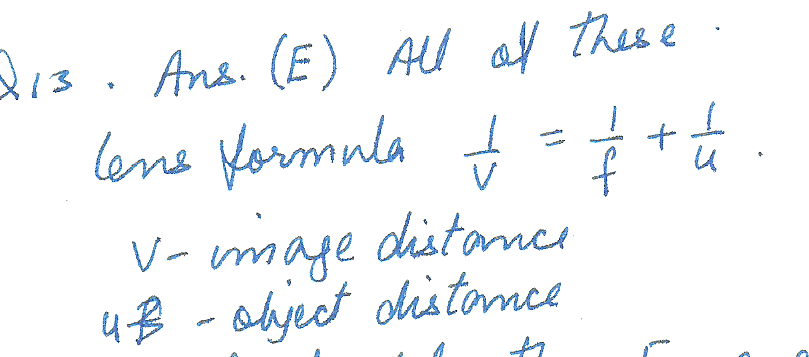
Physics Modern Physics Level: Misc Level
A decay particle is emitted ( by a nucleus) due east into a uniform magnetic field that is directed vertically down. The particle is immediately or instantaneously deflected north. The particle is a:(A) alpha (B) beta (C) gamma (D) neutron (E) proton (F) either alpha or proton. Give a conceptual explanation of your answer.
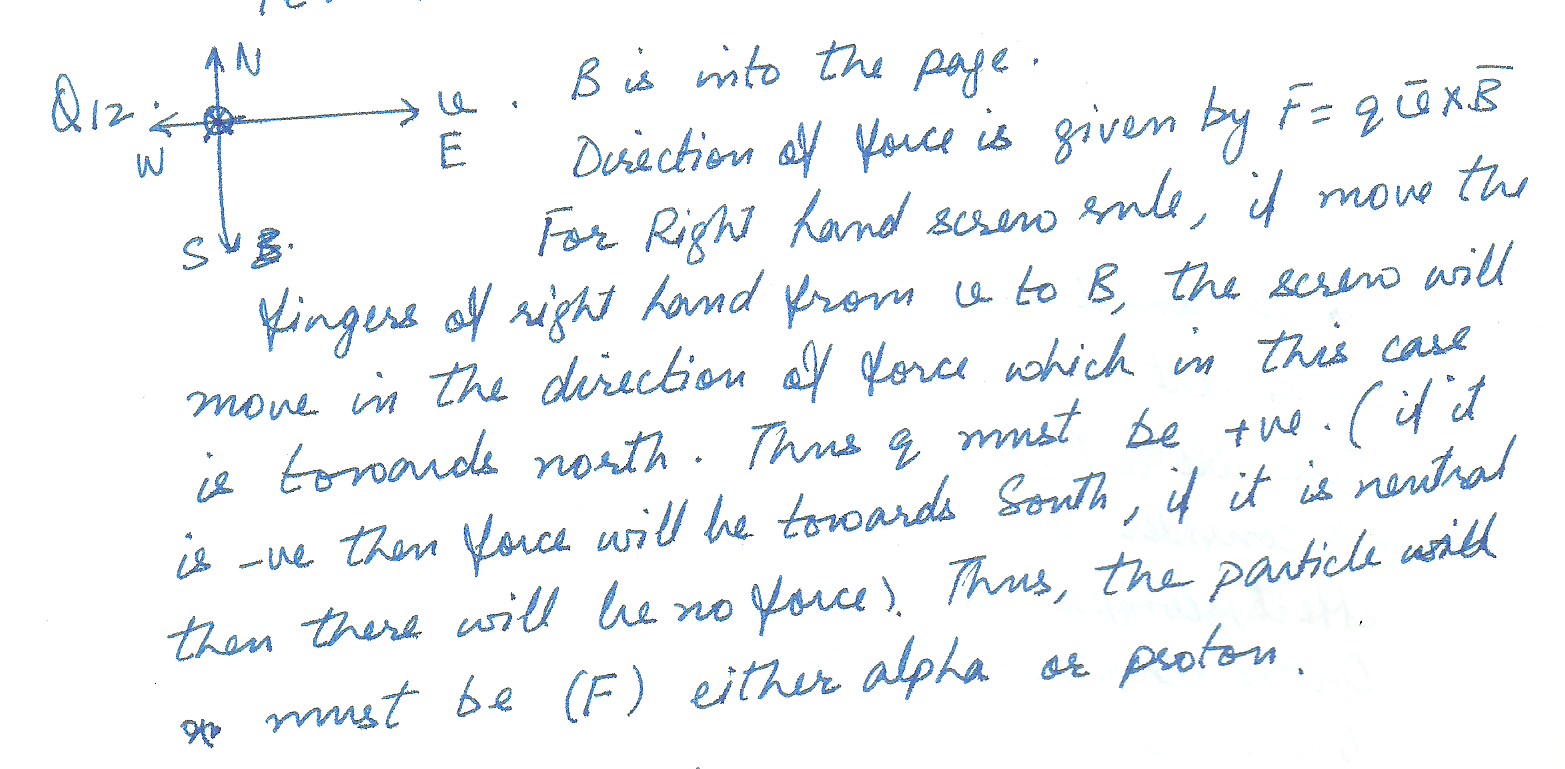
Physics Units Level: Misc Level
what is or are the valid /acceptable units of "photon" energy?

Physics Relativity Level: Misc Level
A person on a rocket sees an earth -bound observer to be increasing in apparent width. Simultaneously, the earth- bound observer sees the mass of the rocket to be (A)increasing (B) decreasing(C) remaining the same. Please explain your choice.
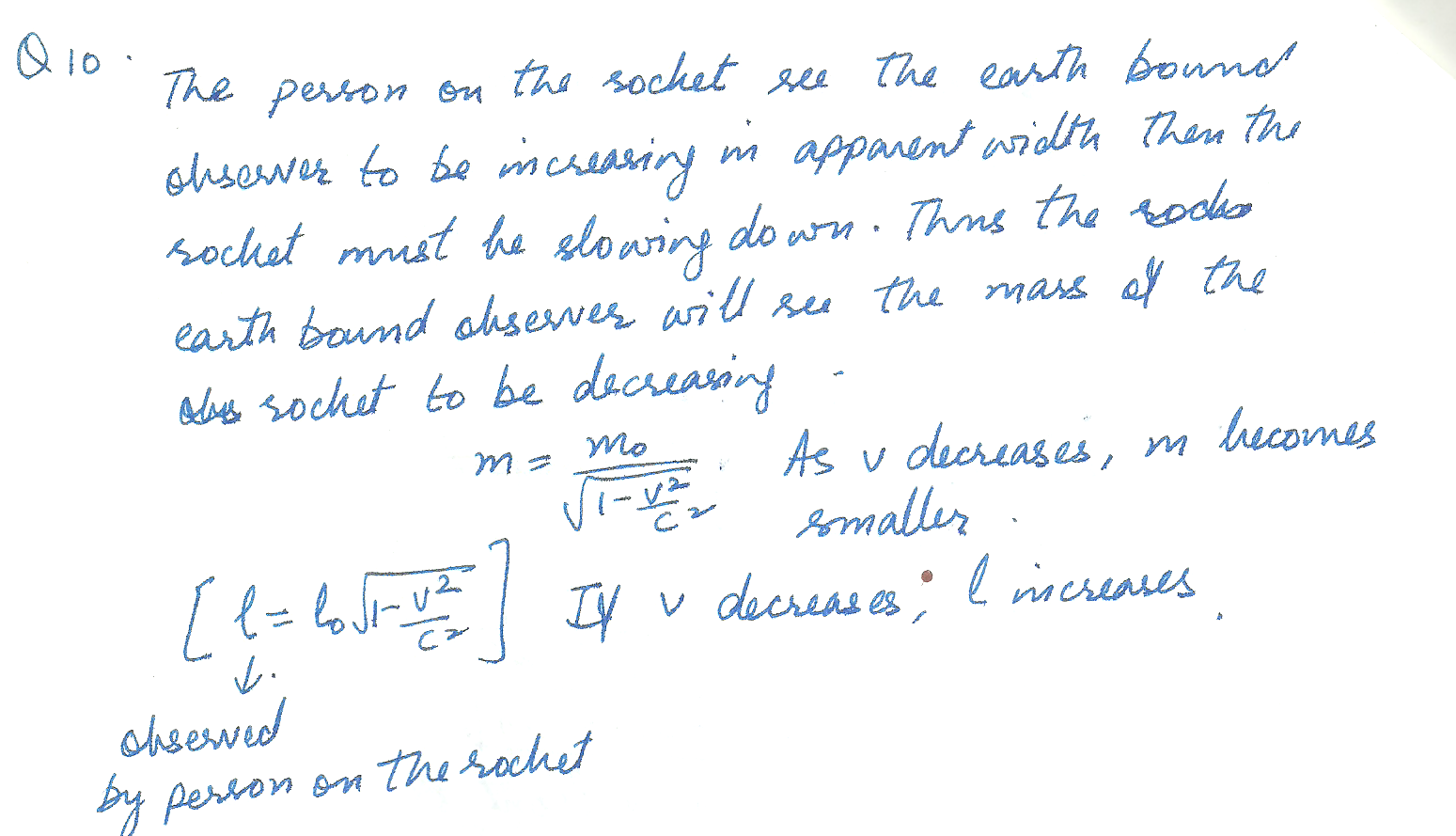
Physics Modern Physics Level: Misc Level
waves and photons (A) can (B) cannot (C) Sometimes, can be used to describe EXACTLY the same EXPERIMENTAL observations. Explain your choice, if possible, give an example.

Physics Ray Optics Level: Misc Level
A 5 cm arrow that points due north is placed in front of a vertical concave lens ( its plane is north and south) at "do "=(0.8 x focal length), a greater distance than "F" The resulting image points where?
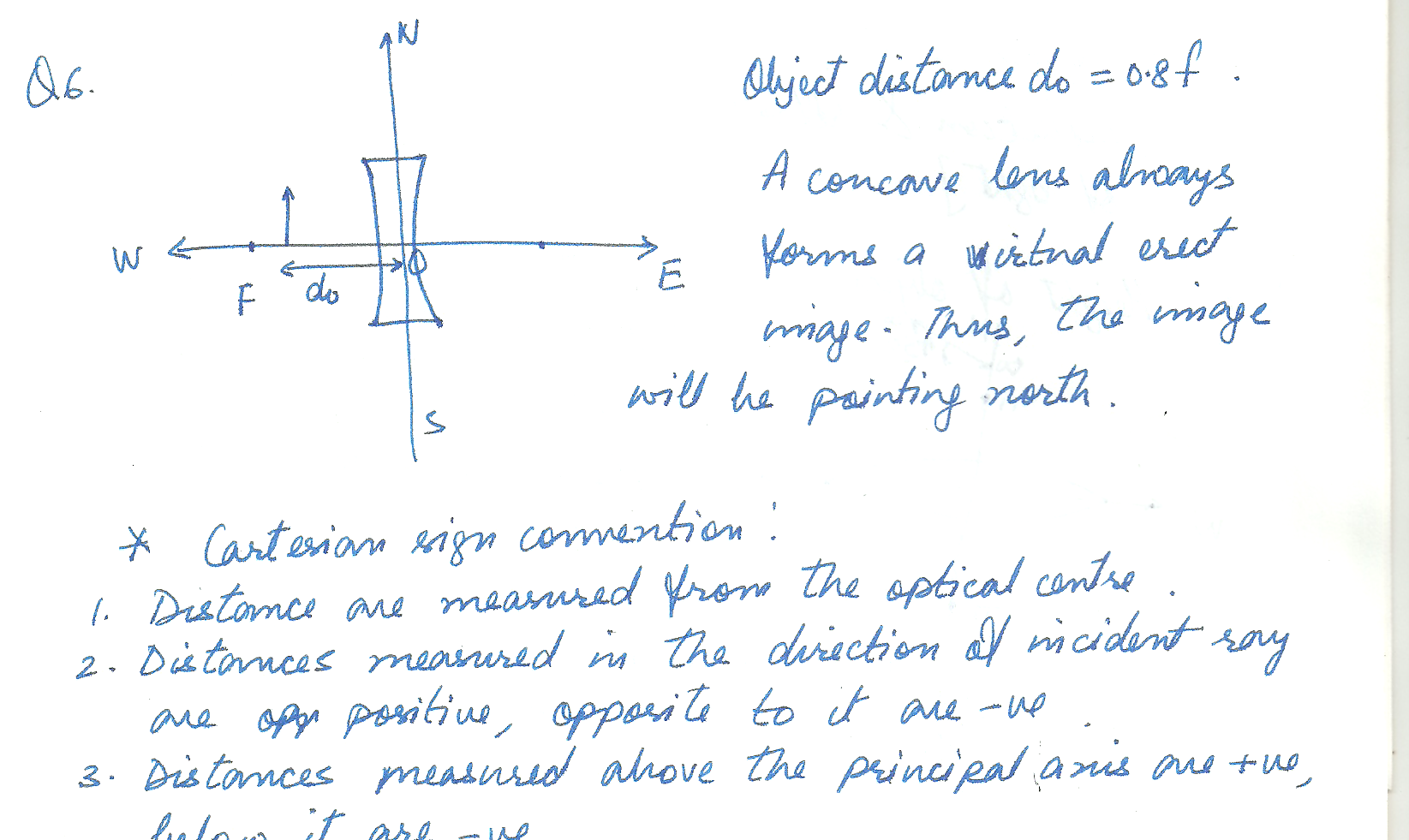
Physics Ray Optics Level: Misc Level
A 5 cm green arrow ( light source) that points northeast is placed directly in front of a vertical east /west convex lens at " do" ( the "0" is an underscript) = x focal lenght). The resulting image points where?. or is there no image Give as vivid a description of your work as possible.
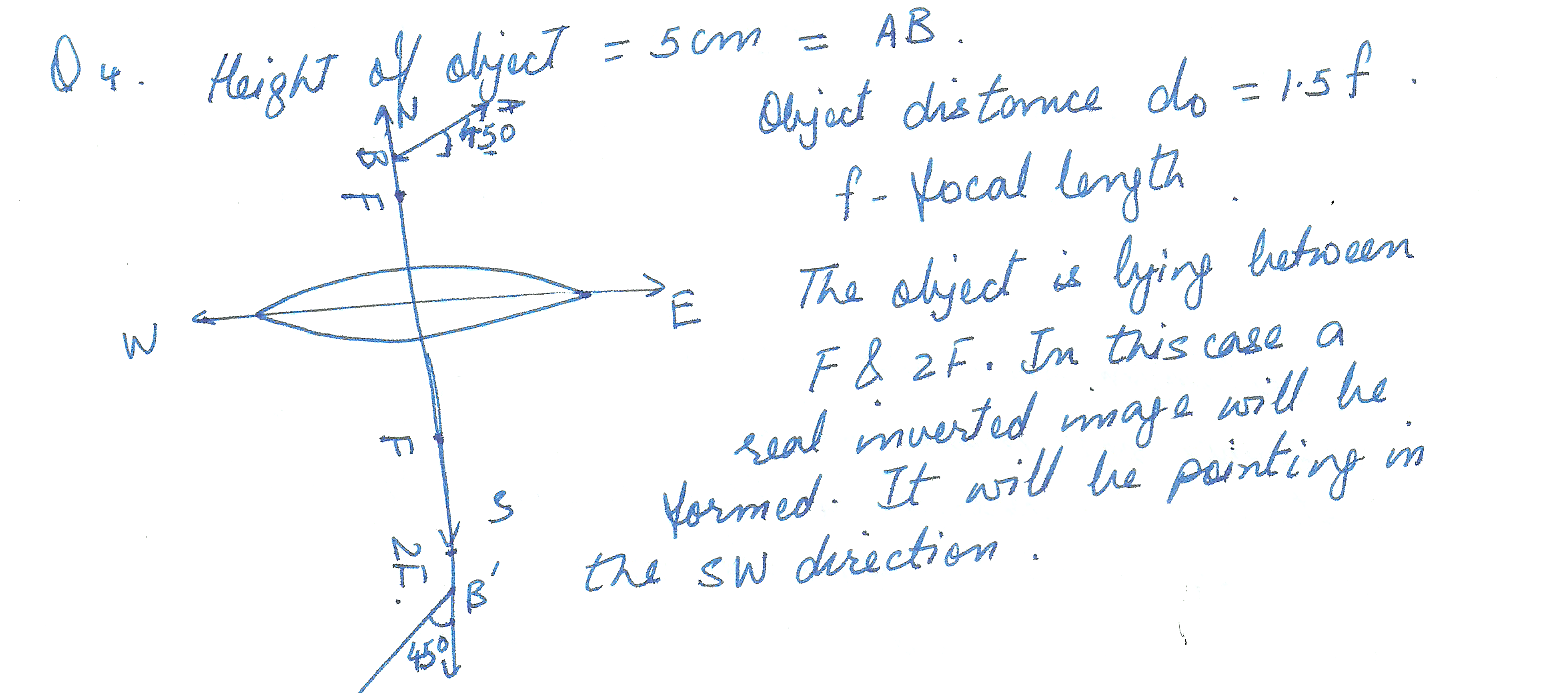
Physics Wave Optics Level: Misc Level
A ray of light in material # 1 strikes an interface at an angle of 40 dregrees, and the ray of light enters material # 2. In the NEW material, is the speed of light (A) LESS THAN (B) GREATER THAN (C) THE SAME AS, the speed of material # 1?. Or, does the answer depend on the frequency of the light, or is more information needed to be able to answer this question? Explain your answer.
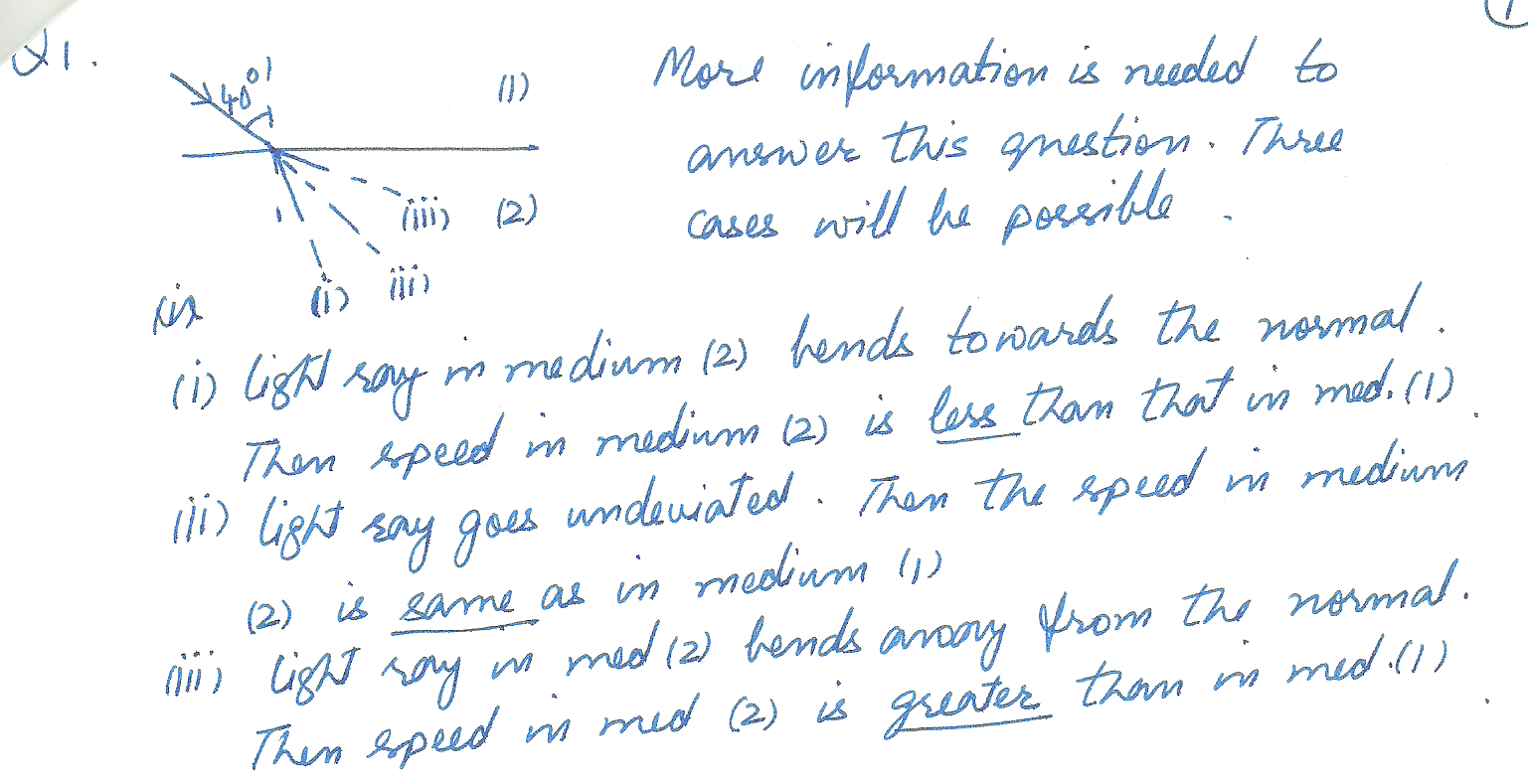
Physics Work,Power & Energy Level: Misc Level
A thin hoop with a radius of 10 cm and a mass of 3.0 kg is rotating about its center with an angular speed of 3.5 rad/s. What is its kinetic energy?
a. 0.18 J
b. 0.092 J
c. 1.05 J
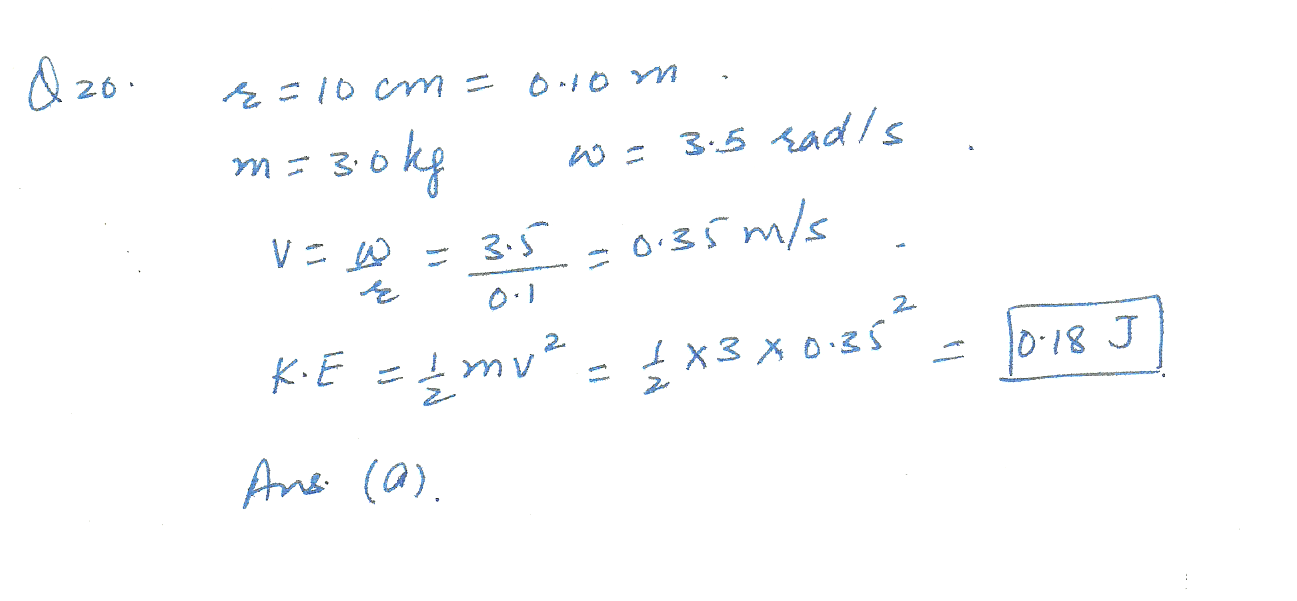
Physics Circular Motion Level: Misc Level
A soccer ball whose radius is 11 cm rolls a distance of 10 m in 3.50 s. What is the angular speed of the ball?
a. 13 m/s
b. 26 m/s
c. 39 m/s
d. 52 m/s
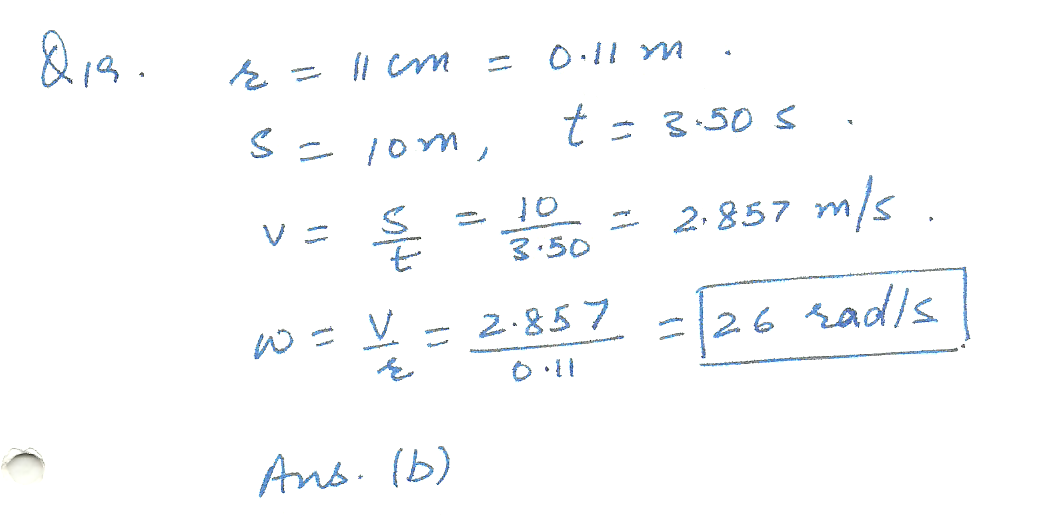
Physics Circular Motion Level: Misc Level
A child is riding a merry- round which completes one revolution every 8.36 s. The child is standing 4.65 m from the center of the merry -go round. What is the tangential speed of the child?
a. 5.64 m/s
b. 3.49 m/s
c. 0.556 m/s
d. 1.80 m/s

Physics Circular Motion Level: Misc Level
A wheel rotates through an angle of 13.8 rad as it slows down from 22.0 rad/s to 13.5 rad/s. What is the magnitude of the average angular acceleration of the wheel?
a. 0.616 rad /s squared.
b. 111 rad/s squared.
c. 22.5 rad/s squared.
d. 10.9 rad /s squared.
